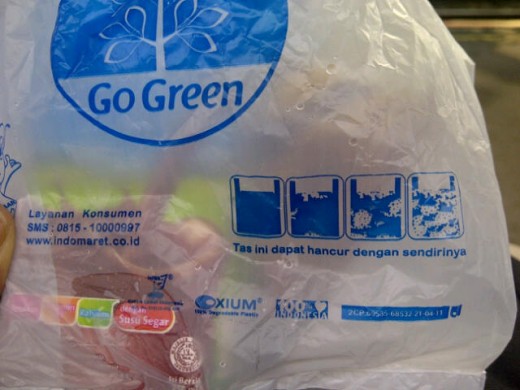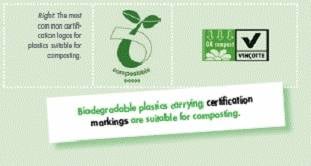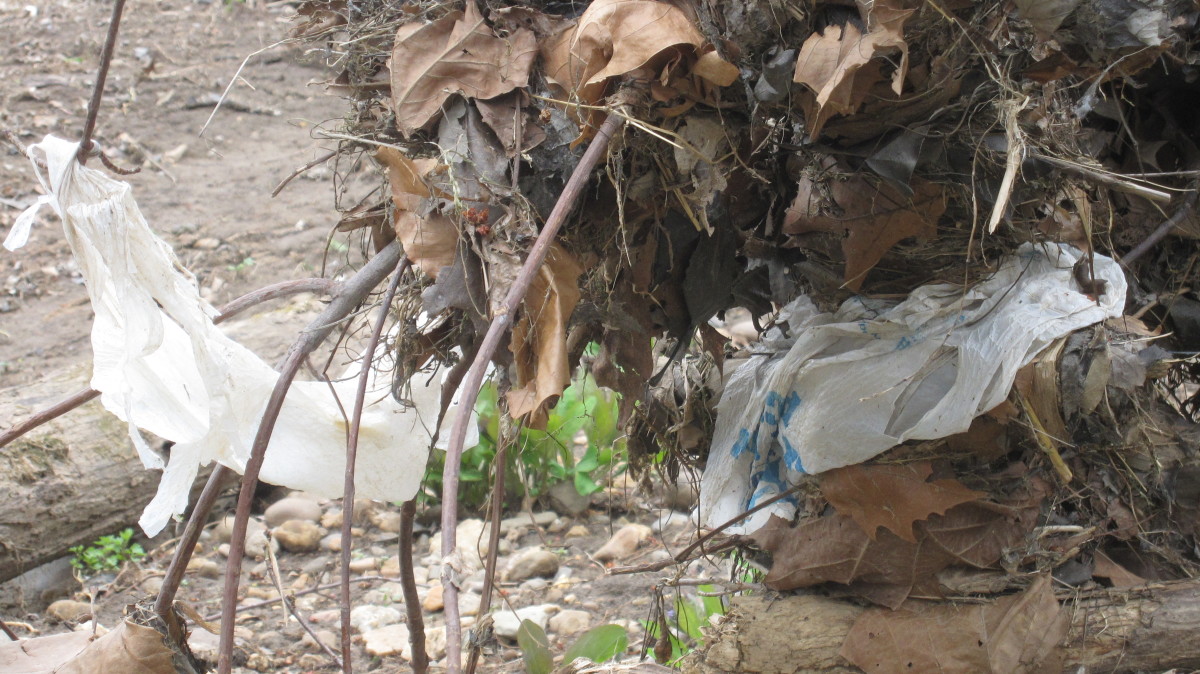Let's Use Biodegradable Plastics.

The world manufactures around 200 million tons every year. About 95% of those plastics are made of petroleum-based materials and only the rest is from degradable materials.
We all know how plastics have become one of the main pollutants in our environment. They stay non degradable on earth for hundred years polluting lands, air and water, clogging waterways, poisoning and killing creatures up to the ocean from generations to generations.
We are all responsible for this situations and we need to arouse people's awareness and consciousness to stop this deterioration to go on since we have obligation to pass the world on to our children, grandchildren, great grandchildren in liveable condition that they also deserve to have.
We don't want to be the one the world curses to for the horrendous pollutions we create.

Traditional plastics.
Traditional plastic is kind of plastic that we've all been familiar with because of its common uses. Traditional plastics are made of petroleum-based materials and they are classified based on :
- The chemical structures of their polymer and side chains. Some important plastics belong to this group are acrylics, polyesters, silicones, polyurethanes, and halogenated plastics.
- Chemical process in their synthesis like condensation, polyaddition, and cross linking.

In addition to the classifications given above,conventional plastics are found in 2 types : Thermoplastics and Thermosetting Polymers. Thermoplastics are plastics that do not change their composition when heated and can be molded again and again, while thermosetting polymers are plastics which the chemical chains consist of thousand repeating molecular units. This kind of plastic can melt and stay solid after being solidified because of irreversible reaction in its structure.

What is Biodegradable Plastic ?
With the concern that the consumption of fuel needs to be decreased due to its finiteness let alone the pollutions caused by the uses of synthetic plastic have been increasing in alarming rate, plastic technology leads to the progress by making biodegradable plastics or bioplastics.
Biodegradable plastics are plastics which can be biologically metabolized into water, CO2 , and biomass by microorganisms.
There are two approaches applied in producing biodegradable plastics
- Biodegradable plastics made from renewable organic materials, called Bioplastics. The material normally used is starch from corn, wheat, or potato. To avoid from swelling when it gets moisture, the starch molecules are modified from monomer into polymer. First the starch harvested from those grains or potato is transformed into monomer lactic acid, then chemical treatment is given so that lactic acid links up into long chains of polymers. The polymers bond together to form plastic PLA (Polymer Lactic Acid or Polyactide).
- Another technique in making biodegradable plastic is inside bacteria cells. Scientists have managed to manipulate Escherichia coli to directly to produce butanediol (BOD), a chemical compound used to make everything from plastics like car bumpers, spandex, etc. E. coli produces granules of plastic called polyhydroxyalkonoate (PHA) inside their cells.
- Biodegradable plastics are also made from petroleum-based material blended with organic additive in particular composition. Starch powder has been used for this purpose as additive to make traditional plastic biodegradable although it's not fully compostable.
The criteria for biodegradable plastics :
According to American Society for Testing and Materials (ASTM), to be categorized biodegradable, plastics should meet some kind of tests aerobically, anaerobically, and in marine environment. ASTM defines standard specifications and standard test methods to determines whether a plastic will pass or fail to meet the biodegradable specifications, and examines the plastics toxicity. To test biodegradable plastics in anaerobic conditions ASTM has set testing standard called ASTM D5526 which is considered a very accurate test.
When it is biologically decomposed, biodegradable plastic is supposed to disappear and gives end result like compost which is formed at the same rate as natural decomposition of other organic materials. The end results of the decomposition are water, co2 , and biomass.
To meet international standard, plastics should be completely composted in 12-26 weeks.
How does the biodegradation take place ?
There are two main steps how degradation of bioplastics take place in nature.
- Disintegration. This process plastic is broken down into small fragments by non living (abiotic) factors like water, UV, and heat.
- Metabolism. This process involves biotic factors like microorganisms to digest fragments of bioplastics into wate, CO 2 , and organic materials (biomass).

How can we distinguish biodagradable plastics ?
Certification has been given to plastics which are made without petroleum with a particular symbol. The symbol can be seen at the product as well as at its packaging indicating plastics made of organic, renewable resources like potatoes, corn, wheat, tapioca, sugar, algae and other natural materials.The symbol was created in 2011 as a result of a design competition sponsored by Cereplast. Inc and as the owner of the symbol's trademark.
The symbol will be used as a single indication for biodegradable plastics in the future changing other symbols which had been used before.

Where is to buy and what is the cost ?
Biodegradable plastic can be bought at main hardware, agriculture, and online stores (including Amazon ) and the price is higher than traditional plastic as the scale of manufacturing is smaller. Although the price of biodegradable plastic is 2 to 10 times more expensive than the traditional ones but if the cost of the environmental impacts are taken into consideration, they actually give more economical price.

Why should we change traditional with biodegradable plastics ?
- Traditional, petroleum-based plastics consume a lot of non renewable resources in their manufacturing and the wastes have polluted lands and seas, poisoned and killed various organisms. They also cause problems by clogging water ways, ruin landscape and become favorable places for diseases to breed.
- Plastics made from natural materials like corn, wheat, potatoes use up to 70% less CO2 than traditional plastics and they can be "returned" to nature as compost in just around 12 weeks while petroleum-based plastics need up to 1000 years to degrade naturally.
- Using biodegradable packaging will make positive image in business. It shows the company's concern in environment protections and reduce its carbon footprint.
What procedures should we do to the waste of biodegradable plastic.
Although biodegradable plastic is environment friendly, but we can not dump it at garbage dumps or just throw it at our backyards to let nature degrade it. We are supposed to give used bioplastics to the collectors and they'll send them to composting facilities. This procedure is neede in order to make biodegradable plastics to effectively decompose since the decomposition process needs environment with specific moisture and oxygen. Methane, known as greenhouse gas, is likely to be released when biodegradable material degrades in anaerobic (landfill) environment. The methane gas will be managed by special landfill management either to be burned to eliminate the gas or to be used as low cost energy commonly called biogas.










